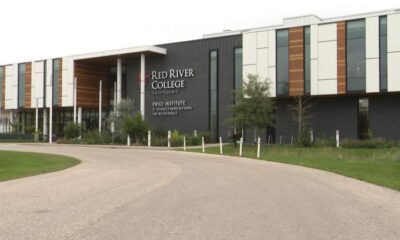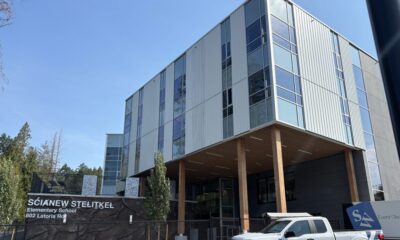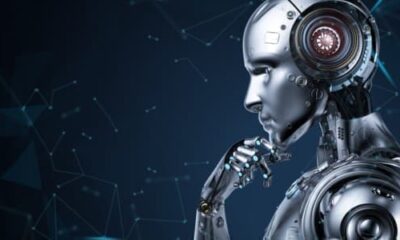Science
Infrastructure Overhaul Drives AI Integration at JPMorgan Chase

JPMorgan Chase has embarked on a significant transformation of its technological infrastructure, enabling a robust integration of artificial intelligence (AI) across its operations. This modernization effort, which involves reimagining the existing systems, aims to create a centralized AI platform that supports advanced automation and enhances operational efficiency.
Building a Centralized AI Platform
The initiative at JPMorgan Chase focuses on creating an enterprise platform that treats AI as a utility rather than a series of disconnected experiments. With the capacity to manage over 450 petabytes of data, this platform allows for the development, training, deployment, and management of machine learning models on a shared infrastructure. The result is a streamlined process that eliminates redundancy and accelerates project timelines.
Previously, the bank faced challenges stemming from decades of legacy systems, which resulted in a fragmented and inefficient technological environment. Data was often siloed, and communication between various applications was limited, leading to delays and increased operational costs. The shift to a unified AI infrastructure has addressed these issues, allowing for more than 6,000 applications to operate cohesively and supporting over 45,000 engineers who benefit from shared resources.
Cloud Migration and Engineering Modernization
A pivotal aspect of this modernization was the retirement of over 2,500 legacy applications, which not only released engineering bandwidth but also reduced redundancy across departments. Approximately 38% of the infrastructure has now migrated to a cloud-native architecture, allowing for elastic scaling and a significant reduction in costs associated with over-provisioned on-premises systems.
The migration to the cloud has improved fault tolerance and uptime, enabling engineers to deploy and experiment with models more swiftly. Data processing that used to take hours can now be completed in minutes, enhancing the overall effectiveness of AI workloads. This transformation highlights the importance of creating flexible and adaptive infrastructure tailored to the demands of modern technology.
Investment in internal tooling has also been crucial. The new platform introduced a range of tools designed to facilitate the creation and deployment of AI models. These include templates, feature stores, and pre-configured compliance modules, which enable engineers to innovate more rapidly without compromising security or quality.
The impact of these advancements is tangible. Model deployment schedules have shortened dramatically, enabling teams to test ideas within hours rather than weeks. This shift has integrated AI into the everyday workflow of the organization, transforming it from a specialized function into a core component of various business operations.
The comprehensive improvements have resulted in substantial financial benefits. The consolidation of infrastructure and elimination of outdated systems have yielded annual savings exceeding $300 million. Beyond cost savings, the platform has enhanced the speed and scope of innovation, allowing ideas to move quickly from prototype to production while circumventing bureaucratic delays.
As a result, the organization can make more informed decisions, leading to improved customer experiences and more secure systems. The new platform serves not merely as a backend upgrade but as a strategic driver for the company’s future.
Cultural Shifts and Future Prospects
One of the most profound changes has been cultural. Traditionally, AI has been viewed as a specialized domain managed by experts. The new platform encourages all engineers to explore AI’s potential, fostering a culture of experimentation and collaboration. This shift has not only attracted talent but has also empowered employees to implement impactful systems without being hindered by legacy infrastructure.
Ongoing training and accessible documentation have further supported this cultural evolution, promoting diverse thinking and creative solutions within teams. This collaborative environment enhances the organization’s resilience and adaptability, crucial in an ever-evolving technological landscape.
Looking ahead, JPMorgan Chase plans to continue building on this foundation by incorporating emerging technologies such as real-time explainability and federated learning. The goal is not only to keep pace with developments in AI but also to influence its trajectory, creating an infrastructure that supports current projects while encouraging the exploration of new ideas.
The transition at JPMorgan Chase illustrates the importance of establishing a solid technological foundation to support the future of AI. As the organization embraces sophisticated systems, it is clear that well-engineered infrastructure can lead to significant advancements, enabling the company to thrive in the digital age.
-

 Education3 months ago
Education3 months agoBrandon University’s Failed $5 Million Project Sparks Oversight Review
-

 Science4 months ago
Science4 months agoMicrosoft Confirms U.S. Law Overrules Canadian Data Sovereignty
-

 Lifestyle3 months ago
Lifestyle3 months agoWinnipeg Celebrates Culinary Creativity During Le Burger Week 2025
-

 Health4 months ago
Health4 months agoMontreal’s Groupe Marcelle Leads Canadian Cosmetic Industry Growth
-

 Science4 months ago
Science4 months agoTech Innovator Amandipp Singh Transforms Hiring for Disabled
-

 Technology4 months ago
Technology4 months agoDragon Ball: Sparking! Zero Launching on Switch and Switch 2 This November
-

 Education4 months ago
Education4 months agoRed River College Launches New Programs to Address Industry Needs
-

 Technology4 months ago
Technology4 months agoGoogle Pixel 10 Pro Fold Specs Unveiled Ahead of Launch
-

 Business3 months ago
Business3 months agoRocket Lab Reports Strong Q2 2025 Revenue Growth and Future Plans
-

 Technology2 months ago
Technology2 months agoDiscord Faces Serious Security Breach Affecting Millions
-

 Education4 months ago
Education4 months agoAlberta Teachers’ Strike: Potential Impacts on Students and Families
-

 Education3 months ago
Education3 months agoNew SĆIȺNEW̱ SṮEȽIṮḴEȽ Elementary Opens in Langford for 2025/2026 Year
-

 Science4 months ago
Science4 months agoChina’s Wukong Spacesuit Sets New Standard for AI in Space
-

 Business4 months ago
Business4 months agoBNA Brewing to Open New Bowling Alley in Downtown Penticton
-

 Technology4 months ago
Technology4 months agoWorld of Warcraft Players Buzz Over 19-Quest Bee Challenge
-

 Business4 months ago
Business4 months agoNew Estimates Reveal ChatGPT-5 Energy Use Could Soar
-

 Business4 months ago
Business4 months agoDawson City Residents Rally Around Buy Canadian Movement
-

 Technology2 months ago
Technology2 months agoHuawei MatePad 12X Redefines Tablet Experience for Professionals
-

 Technology4 months ago
Technology4 months agoFuture Entertainment Launches DDoD with Gameplay Trailer Showcase
-

 Technology4 months ago
Technology4 months agoGlobal Launch of Ragnarok M: Classic Set for September 3, 2025
-

 Top Stories3 months ago
Top Stories3 months agoBlue Jays Shift José Berríos to Bullpen Ahead of Playoffs
-

 Technology4 months ago
Technology4 months agoInnovative 140W GaN Travel Adapter Combines Power and Convenience
-

 Science4 months ago
Science4 months agoXi Labs Innovates with New AI Operating System Set for 2025 Launch
-

 Technology4 months ago
Technology4 months agoNew IDR01 Smart Ring Offers Advanced Sports Tracking for $169










